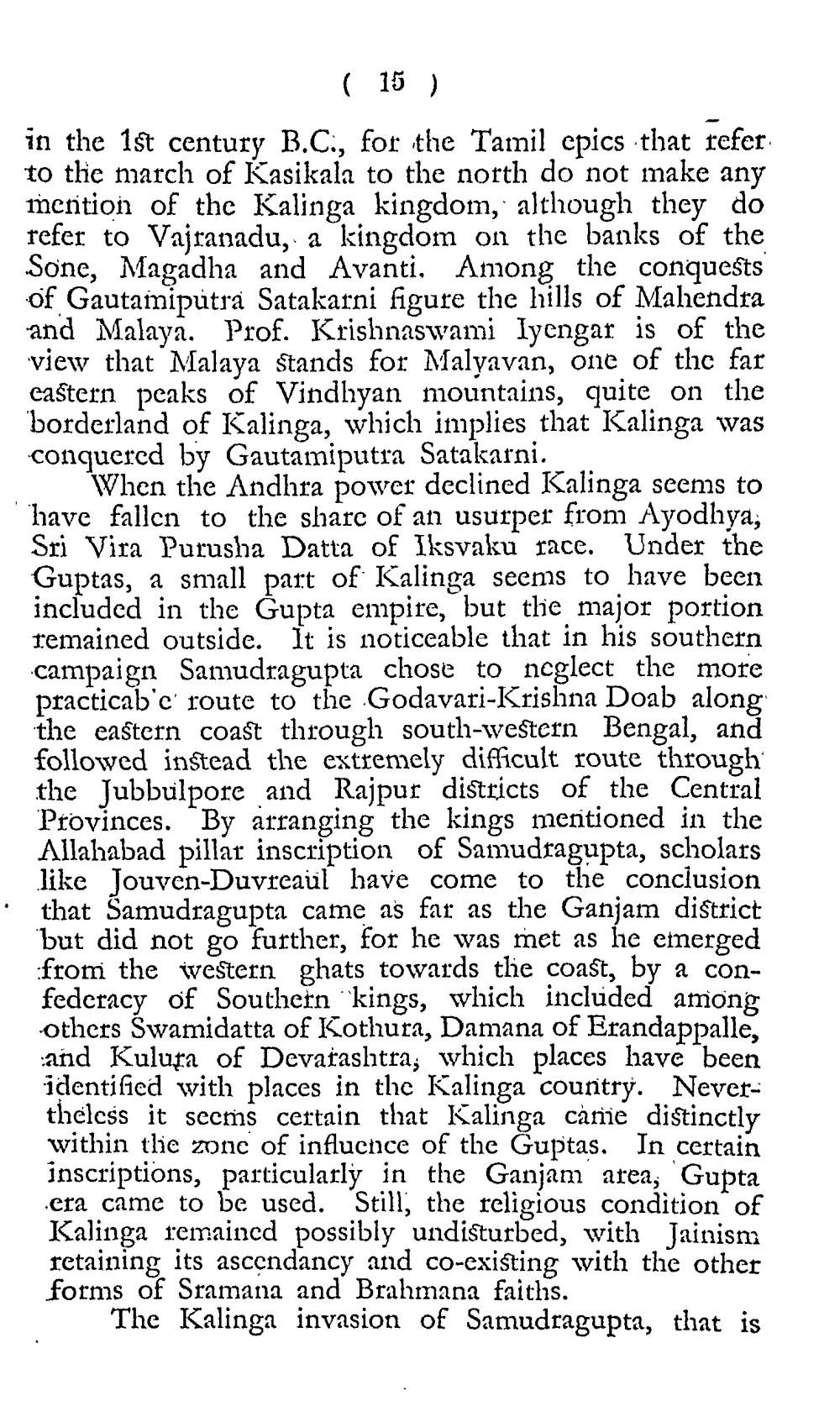________________
( 15 ) in the 1st century B.C., for the Tamil epics that refer to the march of Kasikala to the north do not make any mention of the Kalinga kingdom, although they do refer to Vajranadu, a kingdom on the banks of the Sone, Magadha and Avanti, Among the conquests of Gautainiputra Satakarni figure the hills of Mahendra and Malaya. Prof. Krishnaswami Iyengar is of the view that Malaya stands for Malyavan, one of the far castern peaks of Vindhyan mountains, quite on the borderland of Kalinga, which implies that Kalinga was conquered by Gautamiputra Satakarni.
When the Andhra power declined Kalinga seems to have fallen to the share of an usurper from Ayodhya, Sri Vira Purusha Datta of Iksvaku race. Under the Guptas, a small part of Kalinga seems to have been included in the Gupta empire, but the major portion remained outside. It is noticeable that in his southern campaign Samudragupta chose to neglect the more practicab'c' route to the Godavari-Krishna Doab along the eastern coast through south-western Bengal, and followed instead the extremely difficult route through the Jubbulpore and Rajpur districts of the Central Provinces. By arranging the kings mentioned in the Allahabad pillar inscription of Samudragupta, scholars like Jouven-Duvreaül have come to the conclusion that Samudragupta came as far as the Ganjam district but did not go further, for he was met as he emerged from the western ghats towards the coast, by a confederacy of Southern kings, which included among others Swamidatta of Kothura, Damana of Erandappalle, and Kulura of Devarashtra; which places have been identified with places in the Kalinga country. Nevertheless it seems certain that Kalinga care distinctly within tlic zone of influence of the Guptas. In certain inscriptions, particularly in the Ganjam area, Gupta .era came to be used. Still, the religious condition of Kalinga remained possibly undisturbed, with Jainismi retaining its ascendancy and co-existing with the other forms of Sramana and Brahmana faiths.
The Kalinga invasion of Samudragupta, that is




